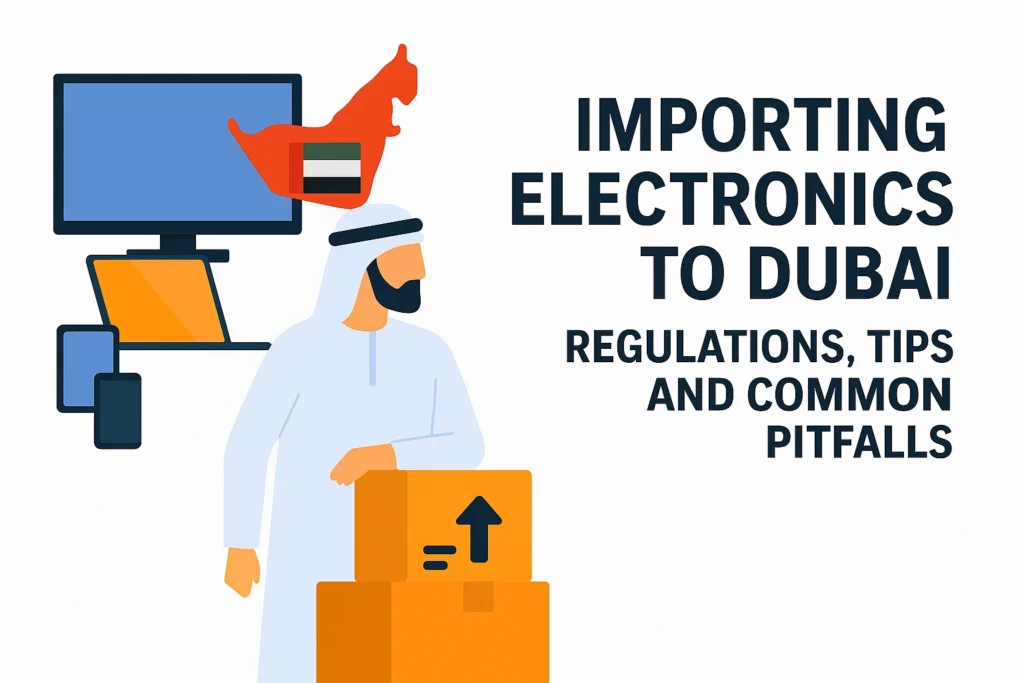Importing electronics into Dubai offers massive potential but also comes with strict regulatory requirements. To avoid delays, fines, or rejected shipments, it’s essential to understand the process and prepare thoroughly. Here’s a complete guide to getting your electronics into the UAE the right way.
🔌 1. Register Your Business and Get Licensed
Before importing, you must have a valid trade license issued by Dubai’s Department of Economic Development or a Free Zone authority. The license should specifically cover electronic goods trading. Without it, you can’t legally import or distribute electronics.
⚠️ 2. Electronics Must Be Certified
Many electronic items require mandatory certification. This includes ECAS (Emirates Conformity Assessment Scheme), UAE RoHS compliance (which restricts hazardous substances), and TRA approvals for telecom-related devices. Skipping any of these may result in your goods being seized or returned.
📦 3. Packaging & Documentation Are Critical
Electronics are fragile and need secure packaging using anti-static materials, bubble wrap, and sturdy boxes. Labels like “Fragile” and clear handling instructions are a must. Documentation such as the commercial invoice, packing list, bill of lading, and certificate of origin must be complete and accurate to avoid delays.
📃 4. Understand Packaging Rules and Restrictions
Dubai Customs has strict regulations for restricted goods, especially electronics. Products must align with your business license and use correct HS codes. Misclassified or undeclared items can lead to penalties or confiscation.
💲 5. Duties, VAT, and Exemptions
Most electronics attract a 5% customs duty, calculated based on the CIF value. On top of that, a 5% VAT applies to the total value after duties. While shipments under AED 300 might be exempt from duty, this usually doesn’t apply to high-value electronics.
🛑 6. Common Mistakes to Avoid
- Skipping mandatory certifications like ECAS, RoHS, or TRA approval
- Declaring incorrect HS codes
- Undervaluing shipments to reduce duty, this can lead to penalties
- Using weak or improper packaging
- Assuming small packages are duty-exempt, most electronics exceed exemption thresholds
✅ Summary Table
| Step | Requirement |
|---|---|
| 1 | Trade license covering electronics |
| 2 | Mandatory certifications: ECAS, RoHS, TRA |
| 3 | Secure packaging and correct labeling |
| 4 | Complete and accurate documentation |
| 5 | Pay customs duty and VAT as required |
| 6 | Avoid errors like wrong codes or poor packaging |
Let SamVertex Handle It for You
At SamVertex, we specialize in smooth and compliant electronics imports into the UAE. From certifications to customs clearance and warehousing, we take care of the details so you can focus on selling. Get in touch today for a free consultation.
References & Sources
- UAE Import Requirements and Documentation – trade.gov
- ECAS and UAE RoHS Regulations – intertek.com, acquiscompliance.com
- Telecom Equipment Approval – productcomplianceinstitute.com
- Mobile & Electronics Shipping Overview – interlinkgulf.com
- Restricted & Prohibited Goods Guide – alsharqi.co
- UAE Import Duty and VAT Breakdown – golocad.com, relocate-uae.com

